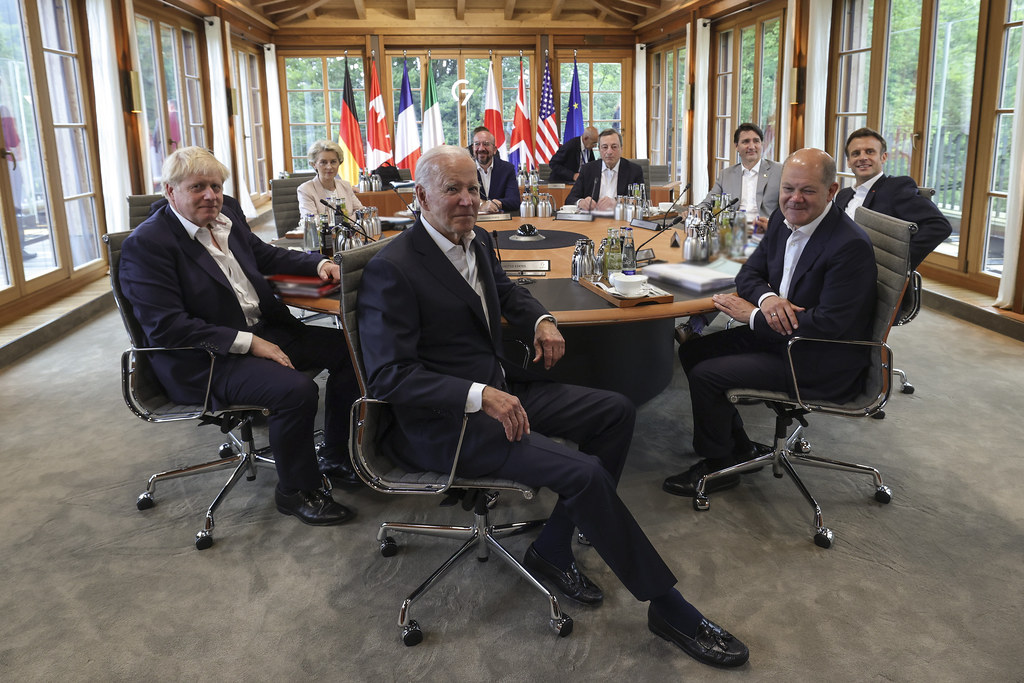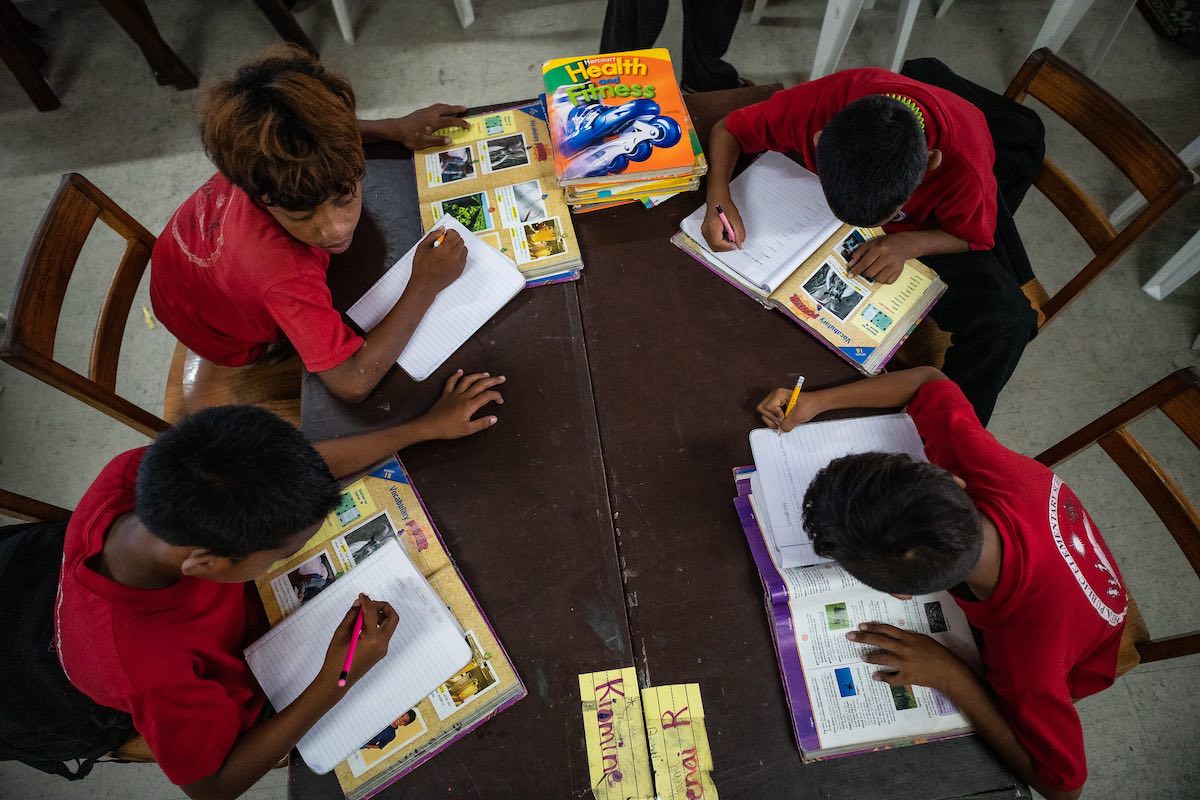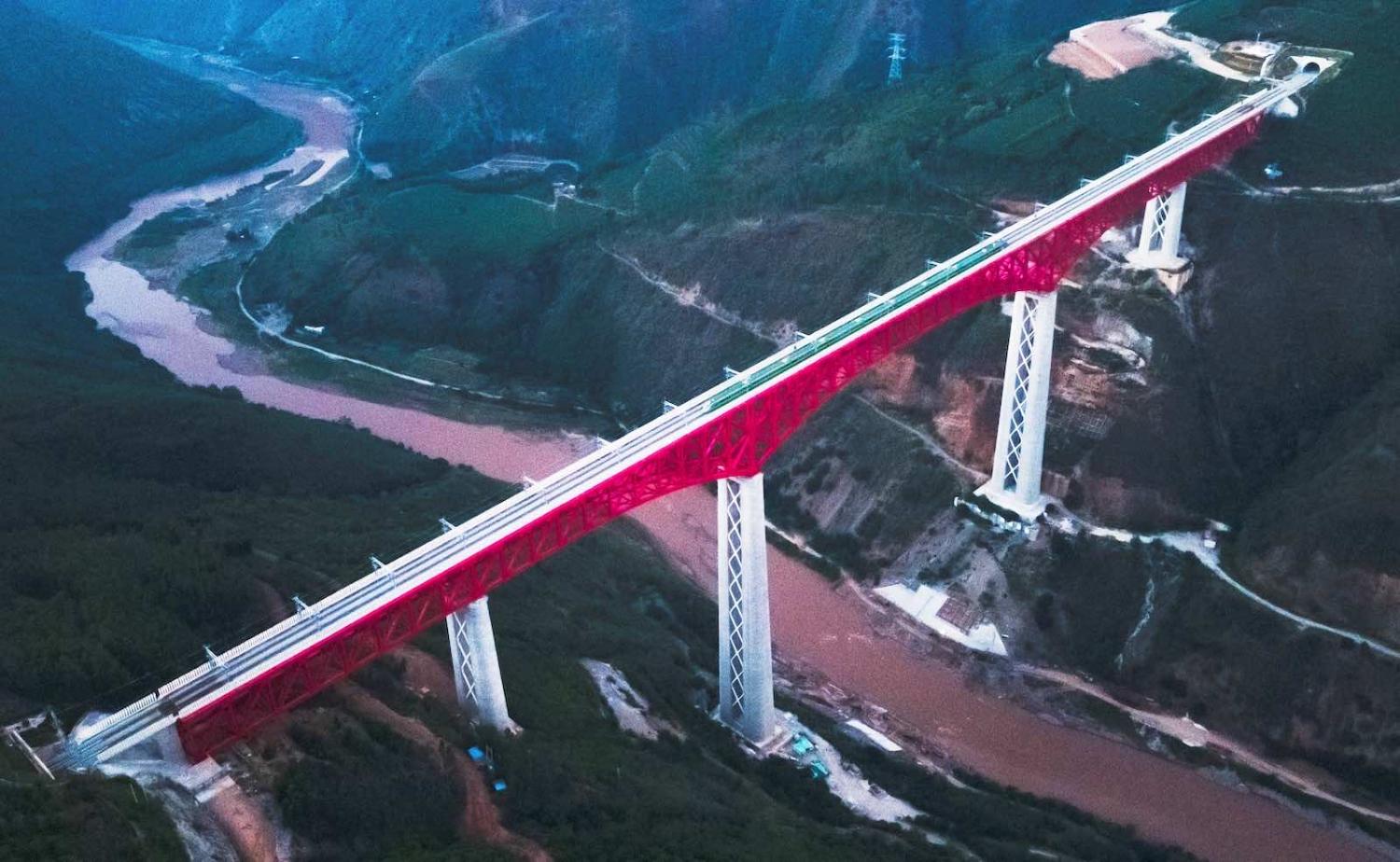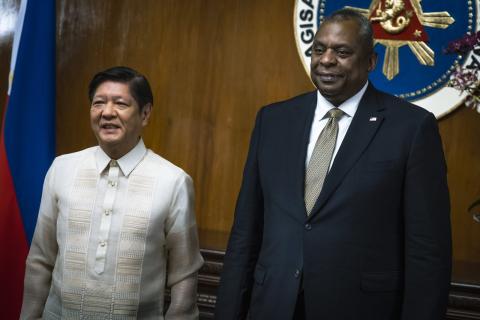Back to basics
In the end, it seems, former prime minister Scott Morrison was on to something with his negative globalist scepticism about building a better world.
If one thing was clear from the Group of Seven’s global infrastructure initiative this week it was that the previous summit’s Mad Men-styled brand name Build Back Better World (or B3W) was, well, soooo last year. Instead, the world’s rich nation club now plans to spend US$600 billion in public and private finance for developing country infrastructure projects over five years under a plain vanilla Partnership for Global Infrastructure and Investment (or PG11).
While the G7 leaders didn’t mention China, this is the latest effort to fashion a competitive but more transparent infrastructure support program to rival the Belt and Road Initiative (BRI), which has now been under way since 2013 and under increasing criticism for drawing countries into unsustainable debt.
Of course, the BRI has been through its own onomatological contortions along the way from the “New Silk Road” and “One Belt One Road” as China has tried to mash existing projects and grand ambitions into a strategy which is now under more of a cloud in a world of rising interest rates.
A transparent alternative with best practice standards is certainly worthwhile when, for example, the International Energy Agency and World Bank estimated last year that annual capital investment in clean energy alone in developing countries needed to rise seven fold by the end of this decade to $1 trillion a year to achieve net zero carbon emissions.

The G7 leaders seem to now be loosely merging various initiatives in United States, the European Union (the Global Gateway), Britain (the Clean Green Initiative) and Japan (which has a Trilateral Infrastructure Partnership with the Australia and the United States), some of which have emerged after the blitz of publicity about B3W at last year’s summit, which Morrison attended.
As noted here previously, the build back better moniker has been embraced by both neo-liberal globalists and the developmental left over the years. Curiously despite their different ideological leanings, both the Joe Biden and Boris Johnson teams repurposed it a couple of years ago as government-led and coordinated recovery from not just the pandemic, but also disjointed social, environmental, and infrastructure policies. And so, it flowed into last year’s British G7 summit as a post-pandemic way of muscling up to China and climate change. Morrison had already joined the bandwagon embracing the term when he was spending money as part of his political recovery from the bushfires.
Having criticised China for backing fossil fuel investment in developing countries at odds with carbon emission reduction, this week’s G7 communique has quietly endorsed public investment in new gas capacity.
But the brand hit the wall in January with the collapse of Biden’s Rooseveltian domestic spending plans and Morrison was quick to opportunistically switch sides declaring that this was “some government-centred reimagination of global capitalism” and he had “never really been in the build back better camp”.
Much of the G7 plan still looks aspirational as building a better world runs up against the rising debt burden in developed countries, higher interest rates and potentially domestic voter concern about big spending overseas. That was perhaps behind Biden’s description this week of the rebadged B3W as: “This isn’t aid or charity; it’s an investment that will deliver returns for everyone, including the American people.”
Another difficulty for the G7 leaders, having criticised China for backing fossil fuel investment in developing countries at odds with carbon emission reduction, is that this week’s G7 communique has quietly endorsed public investment in new gas capacity as a means of avoiding the impact of sanctions on Russian gas.
At least German Chancellor Olaf Scholz was honest enough to admit:
Our work on promoting infrastructure globally is also affected by the current geopolitical situation. We have therefore discussed how our investment globally in climate-neutral and low carbon energy including gas can help us as a temporary response to Russia's use of energy as a weapon.
As these initiatives are rebadged and merged there is always an issue of how much double counting and overestimation occurs. For example, when the Biden administration announced a new ASEAN policy with $150 million in new spending last October it included USAID providing $20.5 million to a Southeast Asia Smart Power Program. This week’s PGII includes $40 million for the same program which is forecast to mobilise $2 billion in investment.
And even if the money is actually new and can be super leveraged like that example, there are still questions about whether it will be deployed in five years. For example, as previously noted here, in February the former Morrison government had only drawn down A$52 million of the original $1.5 billion Australian Infrastructure Finance Facility for the Pacific it had announced more than three years ago. Admittedly there are now more projects in the pipeline and Labor will also be conveniently funding some election promises from that existing bottom drawer as well.
The broadly defined West has now had almost a decade to develop an attractive and workable alternative to the BRI amid the branding circus that has occurred within the Biden, Johnson and Morrison regimes, so hopefully the wrinkles should be sorted by now. But recipient countries can’t be blamed for watching the rebadging with some scepticism.
Ironically, after all this, the BRI – which has been loosely valued at several trillion dollars compared with this week’s G7 US$600 billion – is not looking so attractive anymore with Sri Lanka and Laos facing debt crises at least somewhat due to Chinese lending.
Where’s the money
The “hello family” phase of the new Labor government’s introduction to the Pacific continued this week with International Development Minister Pat Conroy largely restating the election campaign promises at the Pacific Update in Fiji. But with the harder implementation phase getting under way, it was more interesting to see where he strayed from the talking points slightly – perhaps from early learning on the job.
One of Conroy’s most interesting statements so far amid Labor’s warnings about a tight budget situation was in this Australian Financial Review interview where he pointed out slightly ominously that remittances from the Pacific workers schemes were “a lot more sustainable than overseas development assistance which is tied to budget cycles”.

On Tuesday, in Suva, he acknowledged that Labor didn’t have a policy on reducing remittance costs but that would have to be a “critical part” of the Pacific labour movement reforms the new government has promised. That is doubly so since it is now emerging that remittances turned out to be particularly important for Pacific countries during the pandemic because they kept flowing home when the foreign tourism revenue disappeared.
Although he was speaking at a long established Australian National University/University of the South Pacific collaboration, Conroy also noted the real work in Pacific education needed to be done in skills development areas such as aged care and in getting internships for Pacific workers so they could fit into Australian jobs. As he put it:
Our goal is for the PALM scheme to deliver a brain gain, ensuring that when workers return home they bring not only remittances, but new skills so they can make a positive contribution to the development of their nations.
At a time when China is being assailed for debt trap diplomacy and the G7 is trying to fashion an alternative that still involves a lot of debt, the Pacific Update discussions tended to coalesce around the idea that the Pacific countries on average are actually not overloaded with debt. And so they will need to prudently take on more in order to boost their typically low economic growth rates amid high population growth.
For example, the Lowy Institute’s Alexandre Dayant argued that with up to US$3.5 billion in new finance needed to over three years to speed recovery when donor countries (like Australia) had tight budgets, Pacific countries would need to turn more to concessional loans. Or as the Development Policy Centre’s Stephen Howes puts it: “Debt can never be a strength but it’s an area of low risk for the Pacific as a whole.”
Indonesia’s hotseat
Prime Minister Anthony Albanese was scarcely back from promoting better trade ties with Indonesia when a now familiar routine played out in the Joko Widodo administration – the trade minister was replaced.
Indeed, being a trade minister in Indonesia is a particularly terminal job with Widodo churning through six ministers in eight years in office. That compares with one foreign minister and two finance ministers.
Having now appointed his third party boss to the job, the president seems to see the trade minister as a political position rather than an economic reform post.
Albanese took both Trade Minister Don Farrell and Industry minister Ed Husic to establish down the line ties in the Indonesian government to win some head-turning outcomes from the two-year-old bilateral trade agreement before momentum under Widodo is lost as Indonesia shifts into an election cycle next year. But the appointment of Zulkifli Hasan as the new trade minister suggests that cycle has been advanced because the new minister has got the job due to being the head of the National Mandate Party which was the latest party to join Widodo’s now sprawling seven party coalition.
As a party boss, and former parliament speaker and forests minister, he has no obvious expertise in trade and is likely to be more fully engaged in the manoeuvring over future presidential candidates. The trade minister controls many lucrative licences and concessions. Having now appointed his third party boss to the job, the president seems to see it as a political position rather than an economic reform post, although that might just be the reality of multi-party government in democratic Indonesia.
The previous trade minister Muhammad Lutfi, a former businessman, was notionally replaced because he had failed to keep down the price of cooking oil amid the global food price inflation even though Indonesia is the world’s largest producer of palm oil. He was also embroiled in a bribery scandal involving trade officials.
In this atmosphere pushing forward with the proposed deeper integration in the Indonesia-Australia Comprehensive Economic Partnership Agreement may depend more on the close ties that have been fostered between the key business groups in each country.


